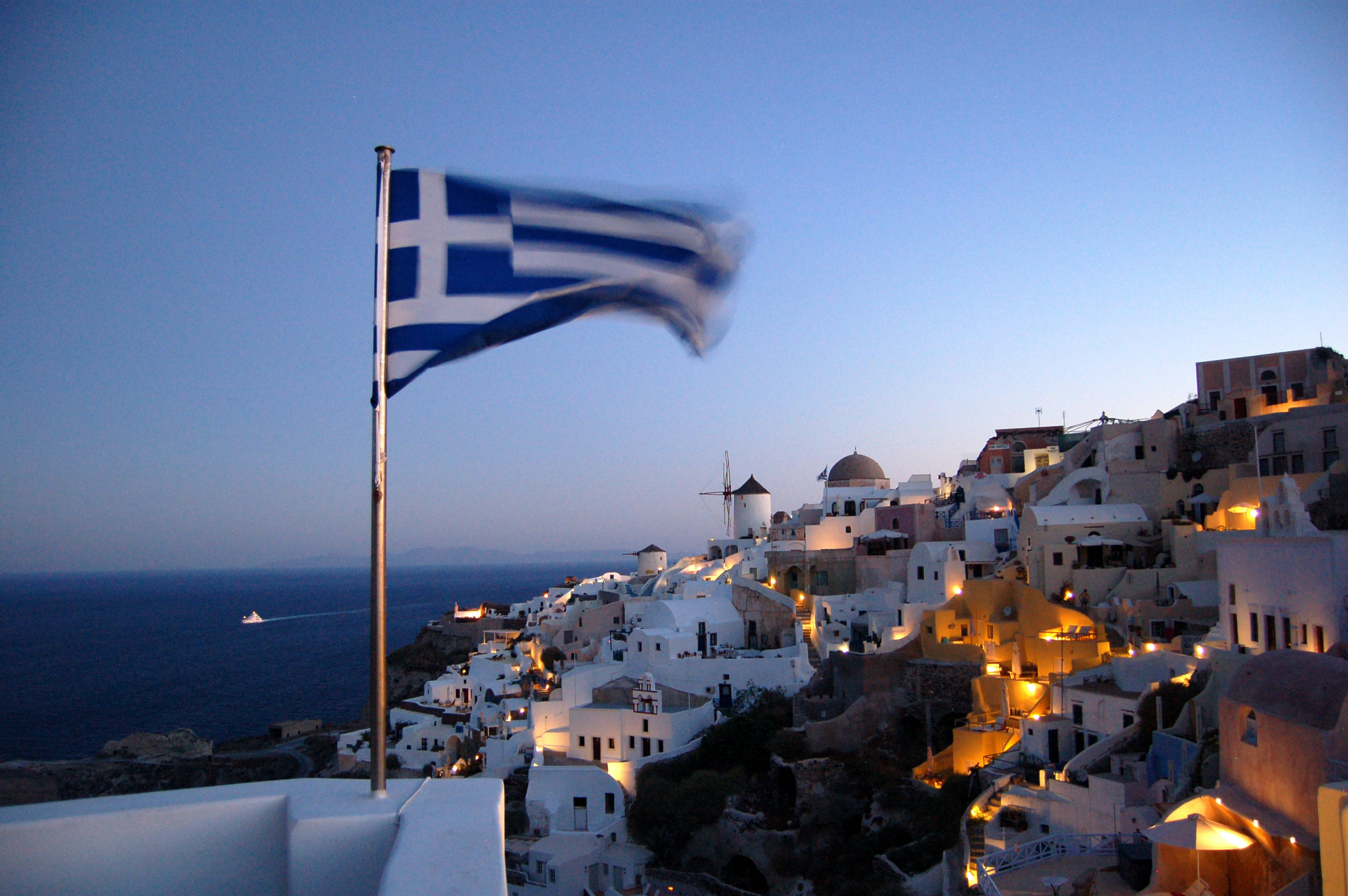Beat The Crowds: The Best Time of Year to Travel to Greece

Greece, with its stunning landscapes, ancient history, and vibrant culture, has long been a dream destination for travelers. From the iconic ruins of Athens to the breathtaking islands and views scattered across the Aegean Sea, Greece offers the perfect mix of relaxation and sightseeing.
When planning your Greek adventure, it’s essential to consider the best time of year to visit. The challenge with busy seasons for travel locations is that they’re busy for a reason: everyone wants to go there at that time. Unfortunately, with so many people crowding locations, it’s difficult to see the tourist spots you’re excited about or even find a chair to use at the beach.
Of course, you don’t have to sacrifice the time of year you’re planning to visit your next vacation spot, but if being shoulder to shoulder with strangers walking down the street doesn’t seem appealing, there are other options for visiting your dream location.
In this blog post, we will delve into the optimal periods to travel to Greece and avoid crowds while enjoying warm weather, clear skies, and access to tourism and activities. We will explore the ideal times to visit Athens and some popular islands.
When is the Best Time of Year to Visit Greece?
Greece is most definitely a popular stop for travelers during their summer travels and on a tour in Athens I was even told that locals will joke that the island of Santorini is sinking in the summer because of the massive number of tourists.
So what time of year will help you avoid these massive crowds? The shoulder seasons!
The Shoulder Seasons — Spring (April-May) and Autumn (September-October):
For travelers seeking a balance between pleasant weather and fewer crowds, the shoulder seasons of spring and autumn are the perfect choice. During April and May, Greece awakens with blooming flowers, moderate temperatures, and a refreshing ambiance.
Similarly, September and October offer milder temperatures, less intense heat, and reduced tourist numbers. These seasons provide an excellent opportunity to explore Greece’s cultural treasures, indulge in outdoor activities, and witness the beauty of nature.
If you are someone who likes to actively get into the water while relaxing at the beach, in the autumn the water will likely be nice and warm from the summer sun which may be more desirable than the spring where the water is much cooler from the winter months.
Athens — Best Time to Explore the Ancient Capital:
Athens is Greece’s historic capital and a must-visit destination for history or Greek mythology enthusiasts. Travel during the spring or autumn months to make the most of your visit. In spring, Athens experiences comfortable temperatures, ranging from 15°C to 25°C (59°F to 77°F) which is ideal for exploring iconic outdoor landmarks such as the Acropolis and the Parthenon.
Autumn offers a similar climate, allowing visitors to enjoy archaeological sites, museums, and vibrant city life without the sweltering summer heat.
Santorini
Santorini, renowned for its enchanting sunsets and unique landscapes, is one of Greece’s most sought-after islands. It’s known to be quite a romantic city and the perfect place for couples to relax and bring new life to their relationship.
To avoid the crowds and enjoy warm weather, plan your visit in late spring (May) or early autumn (September). During these months, the island experiences fewer tourists, enabling you to explore its whitewashed building villages, stunning caldera views, and captivating beaches with ease. The temperatures range from 18°C to 28°C (64°F to 82°F) during these periods, providing the perfect conditions for relaxation and exploration.
Mykonos — The party island
Mykonos is famous for its vibrant nightlife, picturesque beaches, and charming Cycladic architecture. To enjoy the island’s energetic atmosphere while avoiding the peak crowds, consider visiting in late spring (May) or early autumn (September).
However, if you want a more energetic nightlife vibe, then you should visit during the high peak season (summer). The only catch is that if you plan to island hop, other islands may be more crowded and difficult to navigate during this time. If Mykonos isn’t your only stop, prioritize what part of your trip is most important: sightseeing and beaches or nightlife.
During late spring and early autumn, the weather is pleasant, with temperatures ranging from 17°C to 27°C (63°F to 81°F), allowing you to party until dawn, soak up the sun on pristine beaches, and explore the island’s cosmopolitan charm without the overwhelming summer rush.
Crete — A Gem for All Seasons
Crete is Greece’s largest island and a treasure trove of historical sites, stunning landscapes, and diverse experiences. Thanks to its geographical location, Crete offers pleasant weather and a range of activities throughout the year. Spring and autumn are particularly attractive, with mild temperatures between 16°C and 26°C (61°F to 79°F). During these seasons, you can enjoy outdoor adventures like hiking the Samaria Gorge, exploring ancient ruins such as Knossos, and savoring Cretan cuisine without the bustling summer crowds.
Compared to Santorini and Mykonos, Crete is less frequented by tourists making it a prime place to travel for all seasons. You’re less likely to run into challenges with crowding on this island.
Rhodes
Rhodes is a captivating destination that seamlessly combines history and natural beauty. To experience the island’s wonders without the crowds, plan your trip during spring (April to May) or autumn (September to October).
During these periods, temperatures range from 18°C to 26°C (64°F to 79°F), providing an ideal weather for exploring the ancient city of Rhodes, relaxing on golden beaches, and immersing yourself in the island’s culture.
Milos — Hidden Gem of the Cyclades
Milos is a hidden gem that offers a unique blend of stunning landscapes, crystal-clear waters, and traditional charm. While Milos is less popular than islands like Mykonos and Santorini (hence the phrase “hidden gem”), to experience the beauty of Milos without the crowds, consider visiting during the spring or autumn months.
In spring (April to May), Milos showcases its vibrant colors as wildflowers blanket the island, and the temperatures range from 15°C to 22°C (59°F to 72°F). It’s an ideal time to explore the island’s diverse beaches, such as Sarakiniko or Firiplaka. You can also hike the scenic trails, visit traditional villages like Plaka and Pollonia.
Autumn (September to October) is another fantastic time to visit Milos. The temperatures range from 18°C to 25°C (64°F to 77°F), making it pleasant for outdoor activities. The summer crowds have dispersed, immersing you in the island’s tranquil ambiance. As mentioned before, autumn is also an excellent time for water activities like snorkeling and diving, as the sea remains warm from the summer months. By visiting during the spring or autumn, you can relish the beauty of Milos while avoiding the peak tourist season.
When it comes to planning your dream trip to Greece, timing is everything. By considering the shoulder seasons of spring and autumn, you can avoid the crowds while enjoying warm weather and full access to tourism and activities. Whether you classify yourself as a traveler or vacationer, Greece offers something for everyone.
Exploring Athens’ ancient treasures, basking in the tranquility of Santorini, partying on the lively shores of Mykonos, delving into the rich history of Rhodes, immersing yourself in the diverse experiences of Crete, or snorkeling in Milos. Using this info is how you can choose the best time to visit and embark on a memorable journey through this extraordinary Mediterranean paradise.







